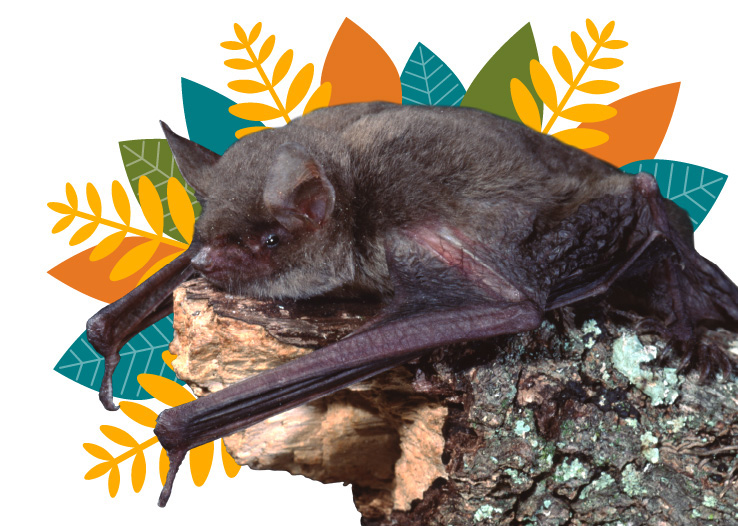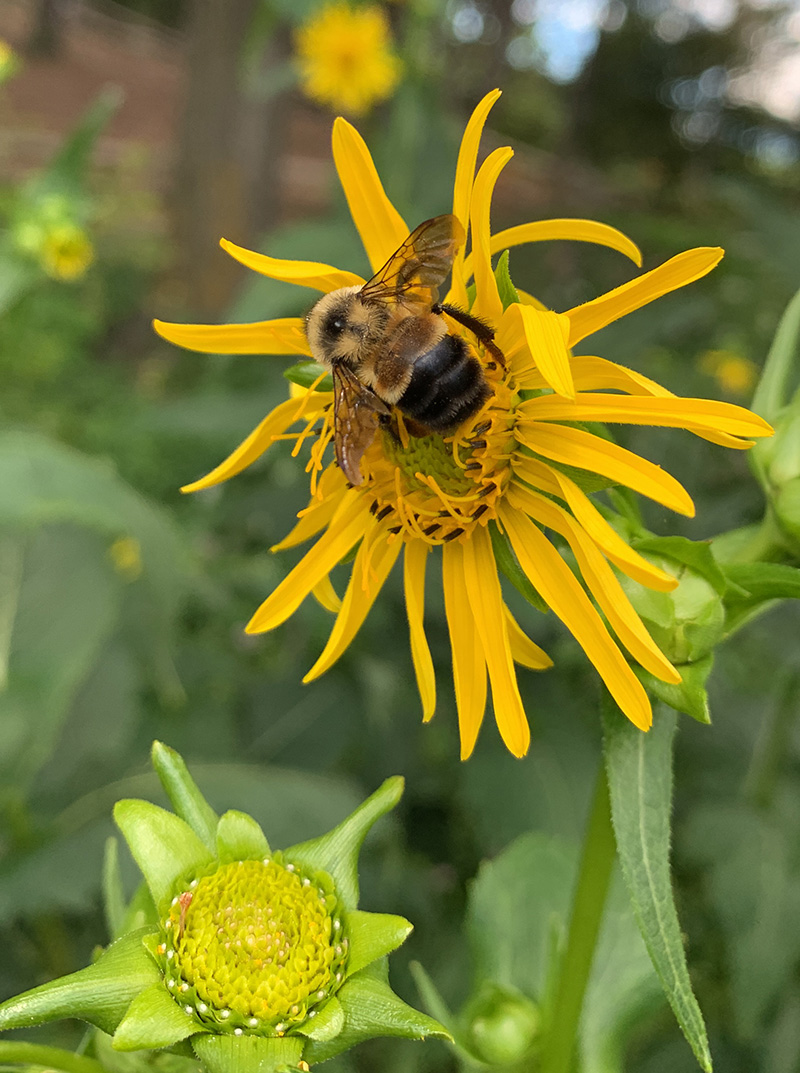Local Species of Concern
Protecting Vulnerable Species
The Conservation Department is proud to work in both outreach and ex situ (in the wild) conservation efforts for the following species in Southeastern Wisconsin: the rusty patched bumble bee, the Poweshiek skipperling, the little brown bat, and the northern long-eared bat. Each of these species are of top concern in Wisconsin, which means they are threatened or vulnerable due to habitat reduction and/or human disturbance.
Both the rusty patched bumble bee and the Poweshiek skipperling are considered endangered under the U.S. Endangered Species Act. Join the Zoological Society of Milwaukee to learn more about the conservation status for these four animals and to explore how the Society is commencing work to conserve these species in the wild.



The Rusty Patched Bumble Bee
(Bombus affinus)
The only bee to be protected under the U.S. Endangered Species Act is the rusty patched bumble bee – and they are found right here in Southeastern Wisconsin! This species is named for a rust-colored band that runs across their abdomen. They are critically important pollinators responsible for pollinating some of our favorite crops, including cranberries, blueberries, apples, and plums. Once found across the Northeastern United States, this species has declined by 87% in the past 20 years (Source: USFWS). Degradation of suitable habitat, including woodlands, marshes/wetlands, prairie, residential parks, and gardens, due to agricultural and residential development and pesticide use are the main threats to the rusty patched bumble bee.
During the 2022 community science Backyard Bumble Bee Count event, a volunteer documented the presence of a male rusty patched bumble bee on Milwaukee County Zoo grounds! “This was a very exciting moment for all of us. Knowing that this species of bumble bee is at risk of extinction, it feels incredible to get this moment of hope,” says Auriana Donaldson, conservation programs coordinator for the Zoological Society of Milwaukee. Read through the below to learn how you can support this endangered species in your backyard!

The Poweshiek Skipperling
(Oarisma poweshiek)
The Poweshiek skipperling is a prairie butterfly, native to Wisconsin and the Midwest, that is protected under the U.S. Endangered Species Act. This butterfly used to be found across the Midwest, however today there are fewer than 500 left in the wild! The species has only been seen in two Wisconsin counties in recent years and is of the highest priority for conservation. With less than 4% of their original tallgrass native prairie habitat remaining in the U.S., the main threat to the Poweshiek is habitat loss and degradation.
Together with the Minnesota Zoo, John Ball Zoo, Assiniboine Zoo, and other local partners, the Zoological Society of Milwaukee is working to protect this species from extinction by preserving prairie habitat and finding innovative ways to prevent the extirpation of this butterfly from our state.
To learn more about the Poweshiek skipperling’s conservation status, visit the USFWS website. To learn more about the ex situ conservation of the Poweshiek, visit the Minnesota Zoo’s Prairie Butterfly Conservation website.
The Little Brown Bat
(Myotis lucifugus)
The Little Brown Bat is one of the most ecologically beneficial animals in Wisconsin! Bats are the primary predators of insects – a single little brown bat can catch 1,000 mosquitoes in one hour. Because bats use echolocation to navigate and locate prey, bat researchers find and study bats by using audio transmitters that detect these echolocation soundwaves. Through their research, we know the little brown bat is in trouble: the species is currently listed as threatened in the state of Wisconsin due to habitat loss and devastating white-nose syndrome.
White-nose syndrome comes from a fungus that grows on hibernating bats in caves. Researchers conduct surveillance on bat populations to detect the disease and study how to prevent it from eradicating bats in our state. To learn more about the Wisconsin DNR’s efforts to study and reduce the presence of white-nose syndrome, visit the Wisconsin Bat Program website.
To learn more about the little brown bat’s conservation status, go to the Wisconsin DNR website.
The Northern Long-eared Bat
(Myotis septentrionalis)
The northern long-eared bat gets its name from its ears, which are only slightly longer, about 3mm, than the little brown bat’s ears. This species of bat was once found across the Northeastern United States and Canada; however, due to the devastating impact of white-nose syndrome on the species and habitat loss, their population has declined in the past 30 years. As a result, the northern long-eared bat is considered threatened at both the state and federal level. These bats hibernate in caves, or hibernacula, in the winter, and roost in the summer in buildings, dead tree snags, or caves at night.
To learn more about the northern long-eared bat’s conservation status, check out the Wisconsin DNR website.


